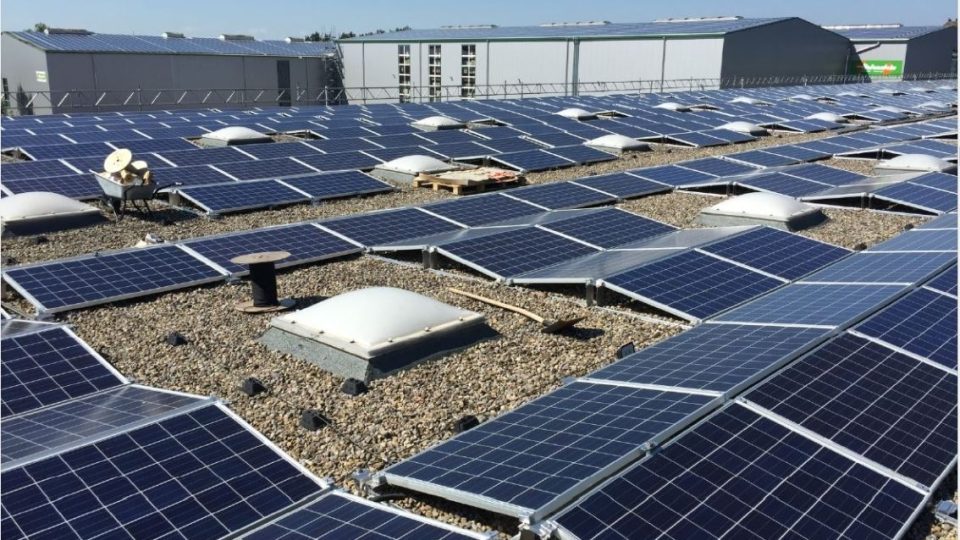In today’s world, where renewable energy is becoming increasingly important, harnessing the power of the sun has emerged as a sustainable and efficient solution. Flat roof solar systems have gained immense popularity, offering an innovative approach to generating clean energy. This comprehensive guide aims to explore the benefits, considerations, and installation process of flat roof solar solutions, empowering readers to make informed decisions towards a greener future.
Harnessing Solar Energy on Flat Roofs: The Advantages
Maximizing Available Space
Unlike traditional solar installations that require large areas of land, flat roof solar systems utilize the unused space on commercial and residential buildings. By mounting solar panels on flat roofs, property owners can maximize their energy production without sacrificing valuable land resources. This advantage is particularly beneficial for urban environments where space is limited.
Increased Energy Efficiency
Flat roof solar panels are designed to maximize energy efficiency. With the ability to tilt the panels at the optimal angle for sunlight exposure, flat roof installations can achieve higher energy yields compared to other mounting options. The design allows for precise positioning and alignment, ensuring that the panels capture the maximum amount of sunlight throughout the day.
Cost Savings and Long-Term Investment
Investing in a flat roof solar system can yield significant cost savings over time. By generating renewable energy on-site, property owners can reduce their reliance on grid electricity, resulting in lower utility bills. Additionally, some regions offer incentives and tax benefits for installing solar systems, further enhancing the financial returns on this long-term investment.
Considerations for Flat Roof Solar Installations
Structural Integrity and Load-Bearing Capacity
Before installing solar panels on a flat roof, it is crucial to assess the structural integrity and load-bearing capacity of the building. Flat roof solar systems add weight to the roof, and it is essential to ensure that the structure can support the additional load. Consulting with a structural engineer or a professional solar installer can help determine the feasibility of the installation.
Roof Material and Durability
The type of roof material plays a vital role in flat roof solar installations. Most flat roofs are constructed using materials like EPDM, TPO, or PVC. It is crucial to choose solar mounting systems that are compatible with the roof material and will not cause damage or compromise the roof’s integrity. Additionally, regular roof maintenance and inspections are necessary to ensure the longevity of both the roof and solar panels.
Shading and Obstacles
Shading from nearby structures, trees, or equipment can significantly impact the energy production of flat roof solar systems. It is essential to evaluate the surrounding environment and identify potential shading sources that may affect the efficiency of the panels. By minimizing or eliminating shading, property owners can optimize the performance of their solar installations.
Installation Process: From Planning to Operation
Site Assessment and Feasibility Study
The first step in installing a flat roof solar system is conducting a site assessment and feasibility study. This involves evaluating the roof’s condition, orientation, shading, and load-bearing capacity. Professional solar installers will analyze these factors to determine the system size, panel layout, and overall feasibility of the project.
Design and Engineering
Once the site assessment is complete, the next stage involves designing the flat roof solar system. This step includes determining the optimal panel layout, wiring configuration, and inverter placement. Designing a solar system that maximizes energy production while considering the unique characteristics of the roof is crucial for long-term performance.
Permits and Approvals
Before commencing the installation, it is essential to obtain the necessary permits and approvals from local authorities. Permitting requirements may vary depending on the jurisdiction and size of the solar system. Working with experienced solar installers ensures compliance with all regulations and streamlines the permit acquisition process.
Installation and Commissioning
During the installation phase, the solar panels, racking systems, and inverters are installed on the flat roof. The panels are securely mounted, and the electrical connections are carefully made. Once the installation is complete, the system undergoes thorough testing and commissioning to ensure its proper functionality and safety.
Monitoring and Maintenance
After the flat roof solar system is operational, it is crucial to monitor its performance regularly. Monitoring software allows property owners to track energy production, detect any issues, and optimize the system’s efficiency. Routine maintenance, including panel cleaning and inspections, is necessary to keep the system operating at its peak performance and extend its lifespan.
Conclusion
Flat roof solar solutions offer an effective and sustainable approach to harnessing the power of the sun. By utilizing available space on flat roofs, property owners can maximize energy production, increase efficiency, and save on utility costs. However, it is crucial to consider factors such as structural integrity, roof material, shading, and the installation process to ensure a successful and long-lasting solar system. With careful planning, professional expertise, and ongoing maintenance, flat roof solar installations can unlock the true potential of solar energy while contributing to a greener and more sustainable future.

